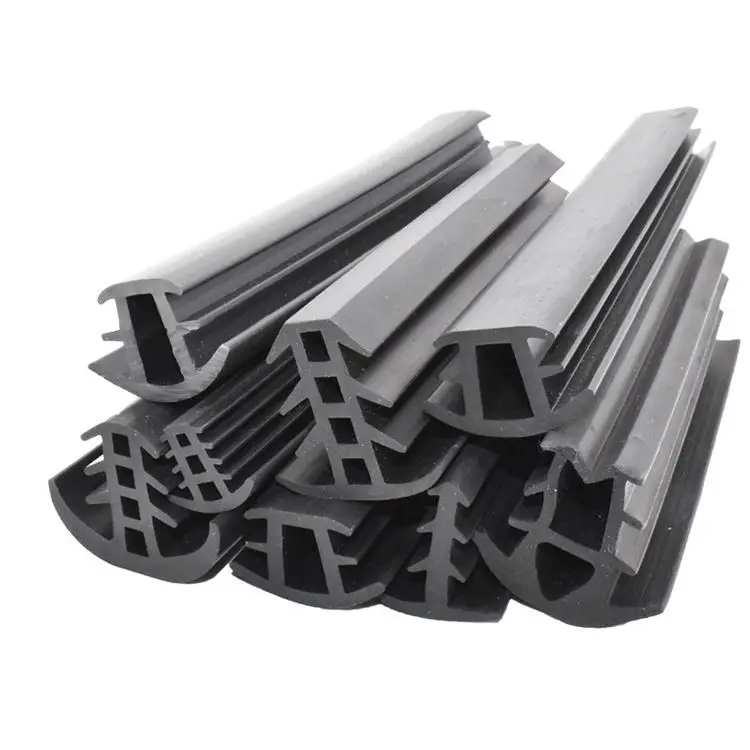Self-Adhesive Sealing Strip Manufacturer for Effective Insulation Solutions
Dec . 10, 2024 04:31 Back to list
Self-Adhesive Sealing Strip Manufacturer for Effective Insulation Solutions
The Evolution and Importance of Self-Adhesive Sealing Strips A Focus on Manufacturing
Self-adhesive sealing strips have become a significant component in various industries, from construction and automotive to electronics and household applications. These versatile sealing solutions provide a reliable way to reduce air and water infiltration, improve energy efficiency, and enhance overall product performance. In this article, we delve into the manufacturing processes of self-adhesive sealing strip factories, highlighting their vital role in modern production.
Understanding Self-Adhesive Sealing Strips
Self-adhesive sealing strips are manufactured from a range of materials including rubber, foam, or silicone, equipped with an adhesive backing that allows for easy application. These strips are designed to create airtight and watertight seals when applied to surfaces, making them ideal for doors, windows, vehicles, appliances, and countless other applications. Their use can lead to significant energy savings and improvements in comfort levels by minimizing drafts and maintaining temperature consistency.
The Manufacturing Process
The production of self-adhesive sealing strips involves several critical steps
1. Material Selection Manufacturers begin by selecting the appropriate materials based on the intended application. The choice of material affects factors such as flexibility, durability, and resistance to environmental challenges.
2. Formulation and Compounding Once materials are selected, they undergo a formulation process where additional compounds and additives are mixed in. This phase adjusts properties such as hardness, resilience, and weather resistance to meet specific industry standards.
3. Extrusion or Molding Depending on the design specifications, the compounded materials are either extruded or molded into the desired shapes. Extrusion allows for continuous lengths of sealing strips, while molding is suited for custom shapes or profiles.
4. Adhesive Application After shaping, an adhesive layer is applied to one side of the strip. This can be done through various methods, including coating, laminating, or direct application. The adhesive choice is crucial as it needs to provide strong bonding while allowing for easy removal when necessary.
5. Cutting and Packaging Once the strips are complete, they are cut to size based on customer requirements. Quality control measures are typically implemented during this phase to ensure that the strips meet the specified dimensions and performance criteria. Finally, products are packaged carefully to protect them during transportation.
self adhesive sealing strip factory

Importance in Various Industries
Self-adhesive sealing strips play a pivotal role in several industries
- Construction In building projects, these strips are critical for creating energy-efficient structures. Proper sealing reduces heating and cooling costs significantly, making buildings more sustainable.
- Automotive In the automotive industry, sealing strips are essential for preventing water and dust from entering vehicles. They also contribute to noise reduction, enhancing passenger comfort.
- Electronics For electronics, self-adhesive sealing strips help protect sensitive components from environmental factors, ensuring longevity and reliability of devices.
- Household Products Many household appliances and items utilize sealing strips to maintain efficiency and performance. From refrigerators to windows, these strips are integral to functionality and user experience.
Future Trends
The market for self-adhesive sealing strips is evolving with advancements in materials science and manufacturing technologies. Future trends include the integration of smart materials that can adapt to environmental changes and further enhance energy efficiency. Sustainable practices are also gaining momentum, with manufacturers exploring eco-friendly materials and production processes to minimize environmental impact.
Conclusion
The importance of self-adhesive sealing strip factories cannot be overstated. They are essential in providing innovative sealing solutions that bolster energy efficiency, improve product performance, and contribute to sustainability. As industries continue to advance and evolve, the demand for high-quality, reliable sealing strips will remain strong. The future is bright for this critical component of modern manufacturing, ensuring that self-adhesive sealing strips will be a fixture in countless applications for years to come.
-
LED Neon Rope Light Outdoor Companies: Durable & Bright Solutions
NewsAug.27,2025
-
Premium Window Seal Strip Adhesive: Manufacturers & Suppliers
NewsAug.26,2025
-
Best Window Seal Strip Adhesive Companies: Strong, Durable Seals
NewsAug.25,2025
-
Karcher A2004 Wet & Dry Vacuum Filter: Premium Replacement Cartridge
NewsAug.24,2025
-
Premium Vacuum Filter for Karcher VC 4, VC 6, VC 7 & Tineco A10, A11
NewsAug.23,2025
-
Hi-Flo HF155 Oil Filter KTM 250 EXC Racing 03-06 | OEM 580.38.005.000
NewsAug.22,2025
